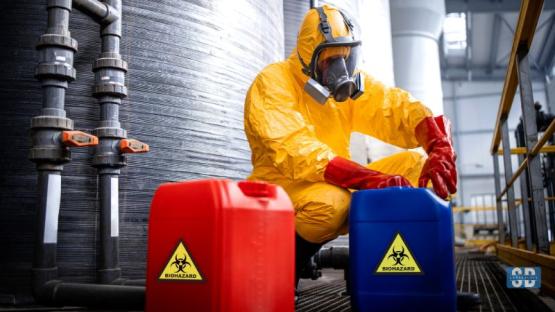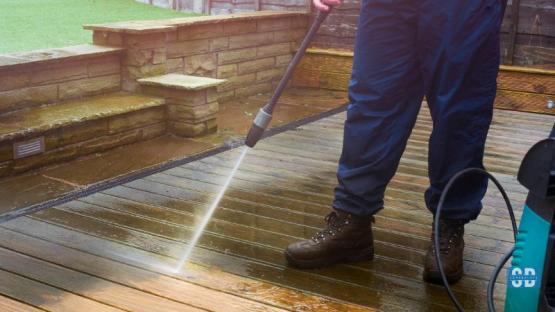Warehouses are busy hubs of activity where heavy equipment, foot traffic, and constant movement are part of the daily routine. But with all this motion comes risk. Hazards lurk in even the most well-organized spaces, and a single oversight can lead to serious injuriesâor worse.
Fortunately, most warehouse accidents are avoidable with the right knowledge and precautions. Below, we outline some of the most common hazards and offer practical ways to prevent them.
1. Slips, Trips, and Falls
Slips and trips are among the leading causes of injury in warehouses. Spilled liquids, loose cords, uneven floors, and cluttered walkways can all trigger falls that result in sprains, fractures, or worse.
Prevention Tips:
- Regularly inspect and clean floors.
- Use non-slip mats in areas prone to moisture.
- Keep pathways clear and cords securely taped down.
- Train staff to recognize and report hazards immediately.
Even minor spills can turn into major incidents if ignored. Prevention starts with awareness and swift cleanup procedures.
2. Improper Lifting Techniques
Back injuries are common in warehouses, often due to incorrect lifting practices. Employees may bend at the waist, twist while lifting, or attempt to carry loads that exceed safe limits.
Smart Solutions:
- Provide proper lifting training with demonstrations.
- Post signage that reminds workers of correct techniques.
- Use lifting aids like dollies or pallet jacks.
- Encourage team lifting for oversized items.
A single poor lift can sideline a worker for weeks. Investing in training and tools is far cheaper than dealing with injury-related downtime.
3. Forklift Accidents
Forklifts are vital for warehouse operations, but they also present significant risks when used improperly. Collisions, rollovers, and struck-by incidents often involve forklifts.
How to Reduce Risk:
- Only trained and certified employees should operate forklifts.
- Maintain clear lines of sightâboth for operators and pedestrians.
- Use designated forklift lanes and pedestrian walkways.
- Conduct daily equipment inspections.
Adding tools like a forklift trailer hitch can increase operational efficiency, but operators must still follow strict safety procedures. Enhancing utility shouldn’t mean compromising safety.
4. Falling Objects
Poorly stacked goods, unbalanced pallets, and unsecured shelving can result in falling objectsâa threat to both employees and equipment.
Proactive Measures:
- Train staff on proper stacking methods.
- Use safety nets or guardrails in high-storage areas.
- Avoid overloading shelves beyond their rated weight.
- Perform regular shelf inspections for damage or wear.
Something as small as a dislodged box can cause serious head or shoulder injuries. Personal protective equipment (PPE) like hard hats is a must in these environments.
5. Hazardous Materials and Poor Chemical Handling
Warehouses storing chemicals or industrial products must adhere to strict safety protocols. Mishandling or mixing incompatible materials can lead to fires, explosions, or toxic exposure.
Safety Best Practices:
- Label all containers clearly with hazard classifications.
- Store chemicals according to safety data sheet (SDS) guidelines.
- Provide accessible PPE, such as gloves and eyewear.
- Train staff on emergency spill response procedures.
The Occupational Safety and Health Administration (OSHA) offers detailed guidance on hazardous materials handling, which every warehouse manager should reference here.
6. Inadequate Lighting
Dark or poorly lit spaces can increase the chance of accidentsâparticularly in aisles, loading docks, and stairways.
Lighting Improvements:
- Use bright, energy-efficient LED lighting throughout the facility.
- Replace burned-out bulbs immediately.
- Install motion-activated lights in low-traffic zones.
- Check for and eliminate shadowy spots during safety audits.
Employees should be able to see where they’re going and what’s around them. Something as simple as upgrading lighting can significantly lower accident rates.
7. Electrical Hazards
Exposed wires, overloaded circuits, and malfunctioning equipment pose real risks, especially in warehouses with older infrastructure.
Steps to Take:
- Schedule regular inspections by licensed electricians.
- Never allow unqualified staff to perform electrical work.
- Ensure outlets and panels are clearly labeled and accessible.
- Install ground-fault circuit interrupters (GFCIs) in high-moisture areas.
An electrical issue may not seem urgentâuntil it results in injury or fire. Preventative maintenance pays off in safety and reliability.
8. Lack of Emergency Preparedness
Many warehouses lack a cohesive emergency response plan. In the event of a fire, chemical spill, or natural disaster, confusion can be dangerous.
Build Readiness Into the Routine:
- Develop and communicate clear evacuation plans.
- Conduct regular drills for fires, spills, and other emergencies.
- Keep first aid kits stocked and visible.
- Install alarm systems with backup power sources.
When the unexpected happens, preparation is the key to saving lives and limiting damage.
9. Poor Communication and Signage
In a noisy, fast-paced warehouse, verbal instructions can get lost. Without clear signage and communication, accidents become far more likely.
Fix the Gaps:
- Use color-coded floor tape to designate walkways and hazard zones.
- Post clear signs at every hazard pointâespecially around machinery.
- Equip workers with radios or headsets in larger facilities.
- Encourage open communication about safety concerns.
Visual cues make a difference. When everyone knows what to expect, they’re less likely to make costly mistakes.
Conclusion: Safety Is a Continuous Process
Warehouse safety isn’t a one-time checklistâit’s an ongoing effort involving people, tools, and culture. The best-run warehouses treat safety not as a regulation to meet, but as a value to uphold. Regular training, equipment checks, and open communication are what keep teams protected and operations running smoothly.
In the end, safety doesn’t slow things downâit prevents the disruptions that hurt productivity and morale. It’s better to be safe, not sorry.








